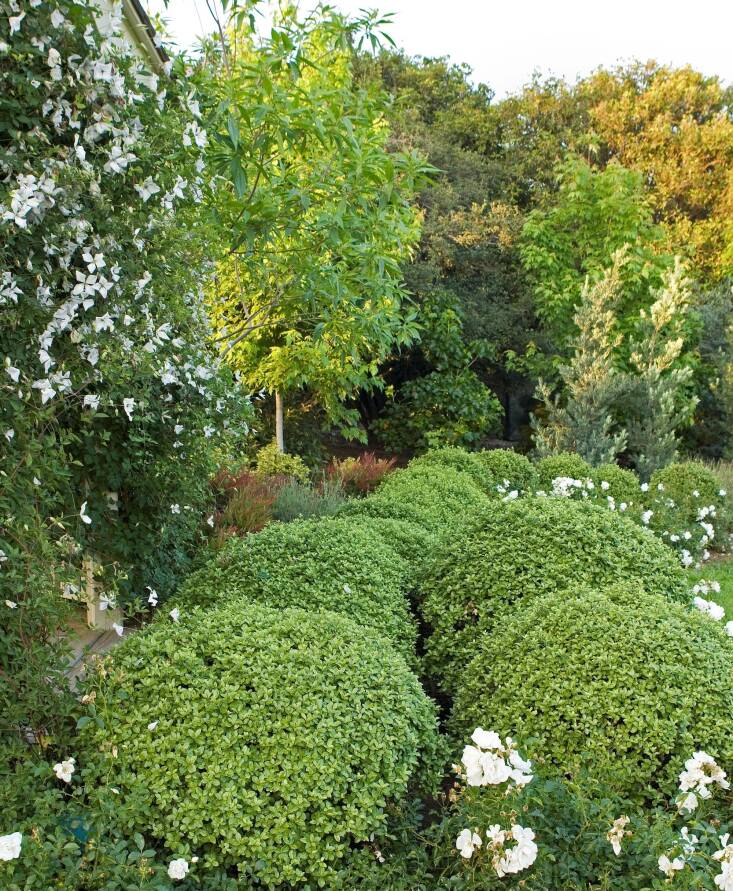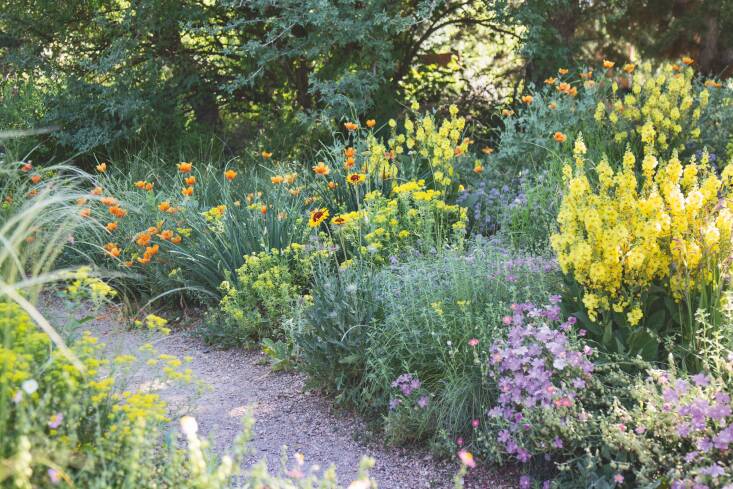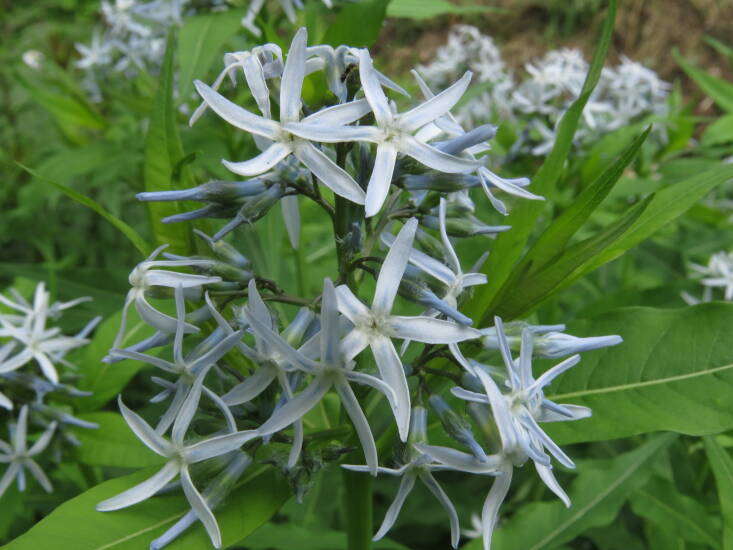Anyone else love rounded shrubs? I’m not talking about topiary that’s been shaped into perfect balls thanks to Edward Scissorhands-like pruning. I’m talking about the shrubs that keep their attractive dome shape all by their leafy selves, with no intervention from us.
You can usually tell that a shrub has a rounded growing habit just by its name. Look for words like: globular, ball, and mound. Lately, I’ve been seeing these words trending in the plant scene. Maybe gardeners are looking for low-maintenance options, which is always smart.
The round shrubs that I’m highlighting below are gloriously evergreen, so you get year-round interest, form, and structure for your garden. Also, they require pruning only if you desire a super-tidy appearance. Where you plant them, and with what other plants, is totally up to you, but I love rounded shrubs when they are either solo in a container, grouped together in a lovely wave-like pattern, or popping up through a garden space like little globular garden gnomes. I also like the look of rounded shrubs paired with looser plants like ornamental grasses or bold-leafed plants like agave. However you use them, here are some of my favorites:
Pittosporum tenuifolium ‘Golf Ball’
Above: Photograph via Monrovia.
This dense evergreen plant provides year-round minty green foliage and a naturally round shape with minimal pruning. Small, inconspicuous dusky purple flowers appear in late spring to early summer. It is hardy in USDA Zone 8-11, appreciates full sun to part sun, and grows moderately quick to 1 to 2 feet tall and wide. This shrub is good for lining an herb garden or alone in a container. ‘Golf Ball’ is a Monrovia exclusive derived from New Zealand. However you use it in your garden design, ‘Golf Ball’ will be hole in one (sorry!). A similar but larger option is Pittosporum ‘Beach Ball’.
Westringia fruiticosa ‘Grey Box’
 Above: Photograph via Dig Plant Co.
Above: Photograph via Dig Plant Co.
Native to Australia, this evergreen, deer-resistant shrub forms a rounded mound and features small rosemary-like leaves with a powdery-gray hue. Small white flowers appear mainly in the spring. Plant in a sunny or partly sunny spot, and once it matures, it will be more drought-tolerant. Westringia, which grows 2 to 3 feet tall and wide, always looks at home in a Mediterranean-style garden. And because it can tolerate wind and sea spray, it’s also great in coastal gardens. It does well in boggy soils, too, and can be a successful addition to a bioswale planting (the only Westringia that can tolerate this). Hardy in USDA Zone 9-10.
Buxus sempervirens ‘Petite Piller’
 Above: Photograph via Monrovia.
Above: Photograph via Monrovia.
This dwarf boxwood slowly grows into a slightly columnar or round shape. Looks great alone in a container for a formal look, as a traditional hedge in a cottage garden, or repeated in a perennial bed for form and contrast. Full sun to part sun is best. Deer and rabbits luckily leave this plant alone. It grows slowly to about 2 to 3 feet tall and 2 feet wide and needs well-drained, neutral to slightly acidic soils. Pro tip: Mulch root zone to conserve moisture and prune only to maintain a more compact shape. Hardy in USDA Zone 5-9.
Thuja occidentalis ‘Anna’s Magic Ball’
 Above: Photograph via Bluestone Perennials.
Above: Photograph via Bluestone Perennials.
For a burst of bright color, try this dwarf evergreen shrub that requires little pruning to retain its roundish figure. Growing to a well-behaved size of only 2 to 3 feet tall and 3 to 4 feet wide, this magic ball maintains its yellow-green hue all year in a partly sunny to a fully sun spot. Perfect for pots and smaller gardens; plus, it contrasts nicely with burgundy-hued plants. Hardy in USDA Zone 3-8.
Gardenia jasminoides ‘Jubilation’
 Above: Photograph via Southern Living Plant Collection.
Above: Photograph via Southern Living Plant Collection.
Honestly, any gardenia variety causes me much jubilation because I am deeply obsessed with their fresh scent, but this one is even more appealing. ‘Jubilation’ is an improved variety that stays glossy and compact but still pumps out fragrant white flowers spring through fall. Growing to 3 to 4 feet high and wide, this gardenia likes a sunny to partly sunny spot in slightly acidic soil with regular water. Make sure to plant this stellar shrub near walkways, doorways, or patios where the dreamy scent can be appreciated. Hardy in USDA Zone 7-10.
See also:



